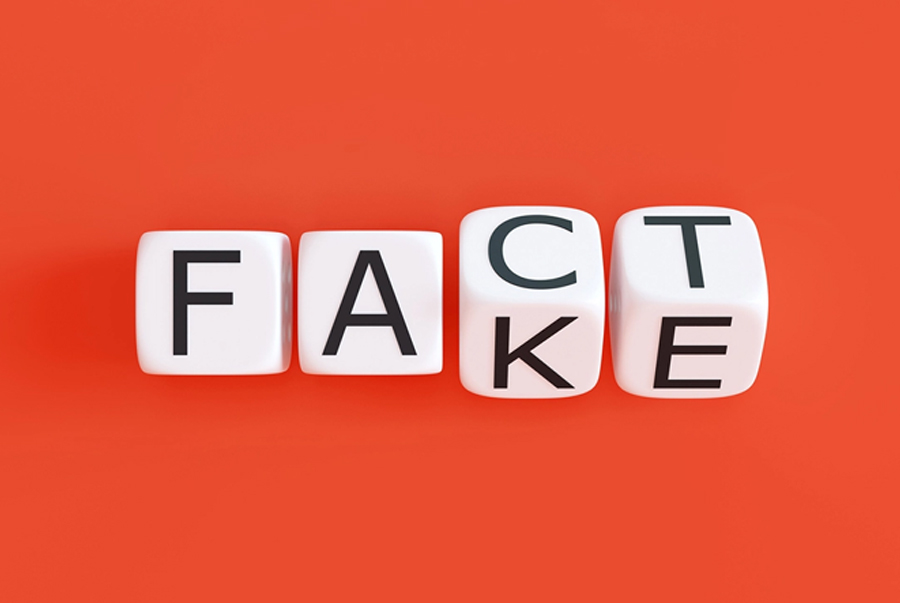Why Fake news are so popular?
Answering the question, will probably evaluate public knowledge, awareness, and attitude toward various perceptions that the fake news had created for certain phenomenon or are attached with people, places, and/or human acts. Let’s first talk about;
Why fake news is so popular?
In November 2016, BBC reported (Link-1) that arrival of social media enabled presentation of real and fictional stories in such a similar way that it is sometime difficult to separate the two. It proved the famous saying of Winston Churchill that “A lie gets halfway around the world before the truth has a chance to get its pants on”.
For me, it is difficult to decide if the dawn of social media helped us being well informed or made us lethargic and impractical to the extent that we don’t like to read research articles, creditable newspaper and/or magazines to get accurate information. Not only this but we generally dislike going out of our network and read and listen to those who may have different but correct viewpoint. This attitude made us liable to get information only from social media and believe only what the people in our social network say. We prefer information from people we trust thus, we are prone to believing and sharing news that my not only be inaccurate but made up of sheer lies.
Before 2016 US general election, the US lawmaker generally believed that automated “Bots” (internet robots or simply bot) are responsible for the spread of fake news which later appeared a perception. “The spread of true and false news online” (Science, Mar 2018: Vol. 359, Issue 6380, pp. 1146-1151: Link-2), reported a study using a data set of rumor cascades on twitter between 2006-2017. The classification of news as true or falls was made using information from six independent fact checking organizations who exhibited 95-98% agreement on classification. The results were amazing. They found that about 126,000 rumors were spread by approximately 3 million people. False or fake news diffused between 1000 and 100,000 people, whereas the truth rarely diffused to approximately 1000 people or less. False political news diffused significantly faster and deeper than the truth in all categories of information and the effects were more pronounced for false news about terrorism than natural disaster, science, or financial information. Since false news were more novel, people share them quickly and extensively because they were more valuable than those they already know: the more the degree of novelty the quicker will be the spread. It was also inferred that “Bots” accelerated the spread of true and false news at the same rate meaning thereby, that humans are involved in the spread of fake news.
In the wake of COVID-19 pandemic, so much appeared on social media that made everyone jittery because it was not possible to read every article and thus, was not possible to get credible information. This forced people including me to consult the people I trusted and did what they advised me. This is not me only, it is the case with everyone. This is what we call cognitive biases or a systematic error in thinking and judgement that occurs when people are processing and interpreting information in the world around them and affects the decisions and judgments that they make which comes into force when our brain attempts to simplify information processing. We believe in information that we receive from people we trust, or the people in our group. We pay attention to and are more likely to share information about risks like I wrote in the earlier blog that most of the people think COVID is a political issue thus, getting vaccination will not be toll free and we like to share this information in our close circle which in turn is shared in their circle and the cycle goes on. These biases are products of our evolutionary past, and for tens of thousands of years, they served us well. For example, people know if they stay away from the garbage den they will saved from the infections and will be more likely to survive than those who don’t practice this.
Information overload
Scientific American recently (December 1st, 2020, link 3) reported that information overload combining with proliferation of online information is one of the most important reasons of fake news popularity. Nobel Prize–winning economist and psychologist Herbert A. Simon coined a term “Attention Economy” in 1971” which is an approach to the management of information that treats human attention as a scarce commodity and applies economic theory to solve various information management problems.
According to him “What information consumes is the attention which is a resource, and a person has only so much that its recipients can handle at any one time. Thus, the first consequence of this so-called attention economy is the loss of high-quality information. As content has grown increasingly abundant and are immediately available, attention becomes the limiting factor in the consumption of information because mental capability of humans is limited and the receptiveness of information is hence limited as well. Attention allows information to be filtered such that the most important information can be extracted from the environment while irrelevant details are left out (more information, in link 4).
The report mentioned various reasons beside “production and spread of online information in the form of blogs, videos, tweets and memes (an idea, behavior, or style that spreads from person to person within a culture) that has become so cheap that it has flooded the information market which put all of us at a difficult position because it is not possible for us to go through all this stuff. Thus, people follow their cognitive biases and create their own “subjective reality” from their perception of the input (Individual’s construction of reality, and not the objective input may dictate their behavior in the world). This is because, cognitive biases may sometimes lead to perceptual distortion, inaccurate judgment, illogical interpretation, or what is broadly called irrationally. These mental shortcuts thus influence us to a harmful extent to decide which information we search for, comprehend, remember, and repeat. It is, therefore, imperative that we must understand these cognitive vulnerabilities (perceptive weaknesses or liabilities), and how algorithm maker use or manipulate them. For example, if we search only once for a specific “fiction” or “conspiracy theory” we will keep receiving various forms of fictions and conspiracy theories for long time which is ample evidence that the algorithm manipulator knows exactly what we like, search for, and believe in. Besides, the moment you go to any marketplace and comeback, you will immediately get a message on your cell phone asking how the marketplace was? Indicating thereby that algorithm manipulator knows where you are and what you are doing? Scary, isn’t it?
University of Warwick in England and Indiana University Bloomington’s “Observatory on Social Media” (OSoMe, often pronounced as “awesome”), conducted cognitive experiments, simulations, data mining and artificial intelligence to comprehend the cognitive vulnerabilities of social media users. The results indicated that “market flooded with information has generated intense competition for people’s attention. The OSoMe team demonstrated this result with a set of simple simulation which represented users of social media called agents, as nodes in their network of online associates. At each step in the simulation, an agent may either create a meme or reshare the one that he or she sees in a news feed. To mimic limited attention, agents are allowed to view only certain number of items near the top of their news feeds. OSoMe found that as the agent’s attention became increasingly limited, the likelihood of a meme being shared three times was approximately nine times less than that of its being shared once.
Some other reasons include:
- Person to person communication
Social media plays pivotal role in spreading fake news by using and/or misusing the trust we have in our friends on social media whom we seldom doubt. This person-to-person communication is not only the fastest way of spreading the fake news but doing this way it becomes credible and trustworthy.
- Sensationalism in fake news
Fake news is largely based on sensationalism compared to the routine news feed relevant for general public which are often presented in very boring and unimpressive way. Doesn’t matter how ordinary or simple is the subject of fake news, it is always overstated to make it larger than life with the help of misinformation and presented in a sensational and sometime in a shocking way which catches the attention on social media from where it spreads like wildfire because sensationalism doesn’t allow us to think rationally.
- Misinformation and story telling
People like to tell and listen to the stories which sometime are narrated in so powerful way that it affects our ability to distinguish between thrilling narrative and factual accuracy that made us susceptible to false claims, myths, and conspiracy theories. Not only this, but this error significantly delays or stop al-together our ability with fact checking. When we watch continuous repetition of fake news headlines on news feed, we start believing it and don’t really care for fact checking especially if the fake news matches our internal biases.
How can we avoid being victim to fake news?
It is not easy, but it is imperative to double check the source of information before sharing it on social media even if the news confirms our biases because in
Psychology and cognitive science, confirmation bias is a tendency to search for or interpret new information in a way that confirms one’s pre-conceptions and avoids information and interpretation that contradict prior beliefs. Jenny Offill: American novelist and editor
Believe those who are seeking the truth, doubt those who find it.
André Paul Guillaume Gide: French author and winner of the Nobel Prize in Literature.
See you next week with new blog and new topic. Till then, enjoy reading this and please don’t forget to give your feedback which is the backbone of this blog and encourage me to keep in touch with you.
Take care.
For more details, please follow the links below.
Link-1. https://www.bbc.com/news/blogs-trending-37846860
Link-2. https://www.science.org/doi/10.1126/science.aap9559
Link-4. The world beyond your head: How to flourish in an age of distraction by Matthew Crawford.
The book can be purchase from “The Guardian Bookshop” (bookshop.theguardian.com).





